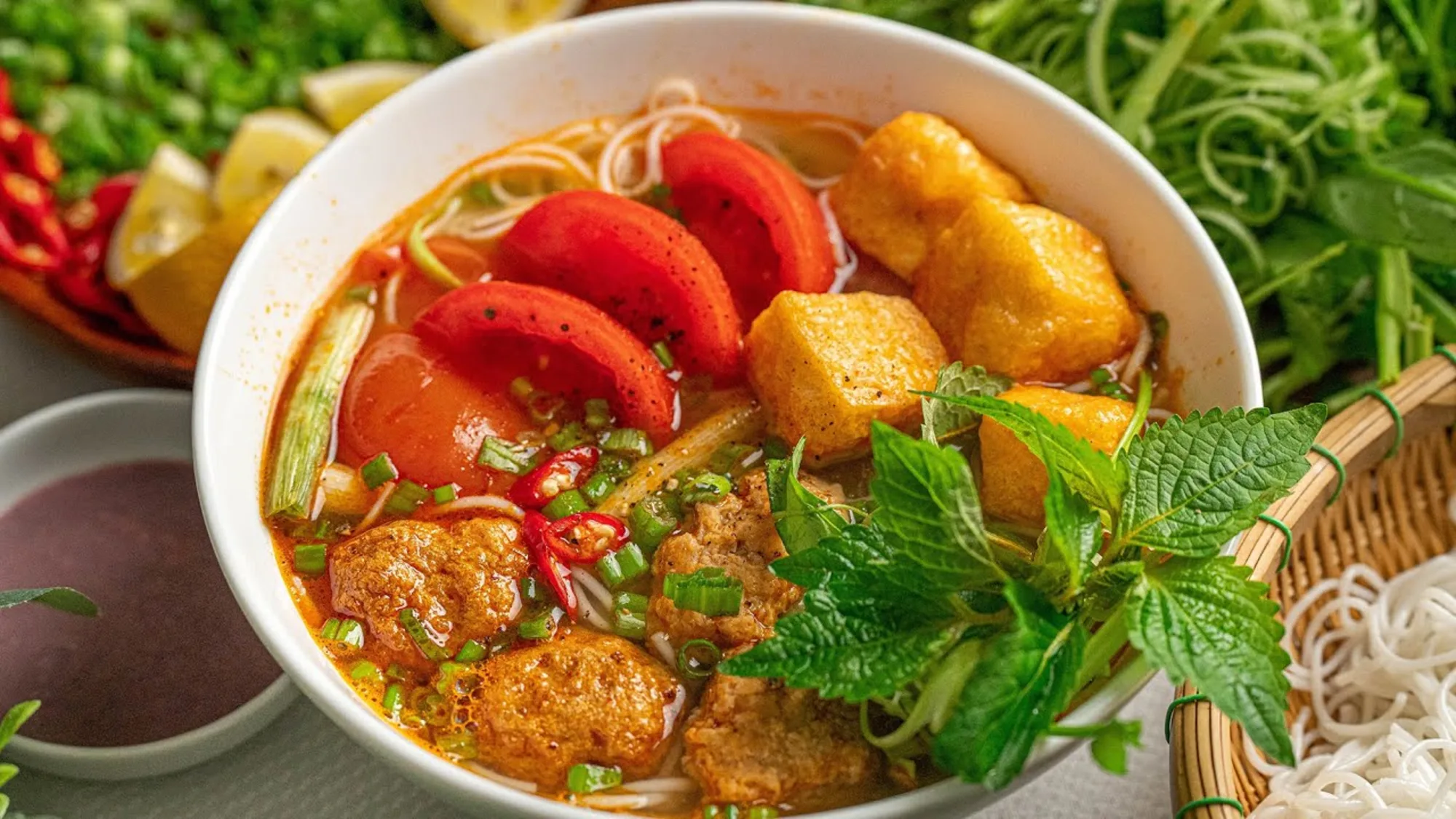
Bun Rieu Cua
Crab noodle soup with tomatoes and tofu.
Ingredients
- •Rice vermicelli
- •Crab meat
- •Tomatoes
- •Tofu
- •Shrimp paste
Instructions
Make Broth
Prepare crab-based soup
Cook
Add noodles and toppings
Bún Riêu Cua is a beloved Vietnamese noodle soup that showcases the delicate flavors of freshwater crab. This hearty dish features rice vermicelli noodles in a rich tomato-based broth, topped with crab meat patties, fried tofu, and fresh vegetables.
The dish originated in Northern Vietnam, where freshwater crabs were abundant in the rice paddies. Farmers would catch these small crabs and use them to create this nourishing soup, making it a prime example of Vietnamese resourcefulness in cooking.
The soul of Bún Riêu lies in its broth, which is made by crushing freshwater crabs to extract their juice and meat. This is combined with pork bones, dried shrimp, and tomatoes to create a complex, umami-rich base. The signature crab meat patties are made by mixing the crab meat with eggs, minced pork, and seasonings, then dropping them into the simmering broth.
While the traditional version uses freshwater crab, modern variations might include sea crab or even a combination of both. Some regions add blood cubes (huyết) for extra richness, while others might include snails (ốc) for added texture. Vegetarian versions substitute the crab with mashed tofu and mushrooms, creating a similar texture while maintaining the dish's essence.
In Vietnam, Bún Riêu is served with a generous plate of fresh herbs, water spinach, banana blossoms, and bean sprouts. Diners can customize their bowl with additions like shrimp paste, lime juice, and chili sauce. The dish is often enjoyed for breakfast or lunch, especially on hot days when its tangy, light broth provides refreshment.
From a nutritional standpoint, Bún Riêu is relatively healthy, being rich in protein from the crab and moderate in calories. However, those with shellfish allergies should avoid this dish due to its crab content. The shrimp paste commonly served alongside it also contains allergens. People watching their sodium intake should be mindful of the amount of shrimp paste and fish sauce they add, as these condiments can significantly increase the salt content.
